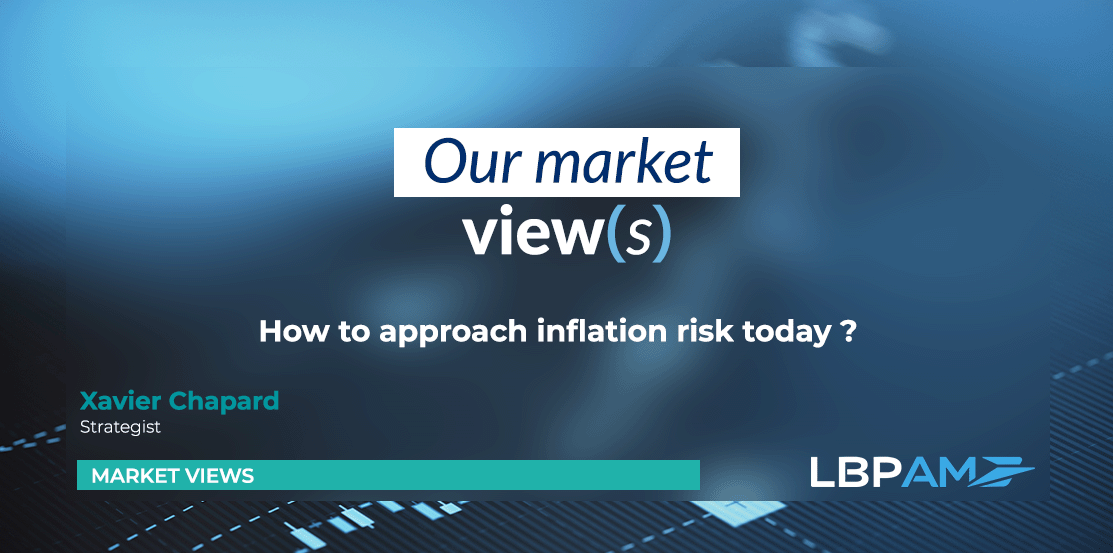How to approach inflation risk today?
Link
Each month, LBP AM deciphers market news in video. Today, LBP AM strategist Xavier Chapard , strategist at LBP AM, addresses the question of inflationary risk in our Market Views" segment.
We have been hit by an unprecedented inflationary shock, with inflation exceeding 10% in Europe in 2022. This came as a surprise because the risks were clearly deflationary in the 2010s. Inflation came down sharply in 2023, leading some to hope the problem had been solved. But it has slowed much less since the start of the year and remains at excessively high levels. What impact will this persistent inflation have on Central Banks and assets?
From 2020-2022 to the present day
We had a lot of bad luck between 2020 and 2022 and a lot of good luck since. Bad luck with the Covid shock, which caused a sharp rise in the price of food and industrial goods, whereas these prices had been stable since 2000.
Bad luck with the energy shock that came with the war in Ukraine, which caused higher energy inflation than the second oil shock in 1979. Fortunately, these two shocks quickly normalized from mid-2022 onwards.
Today, we believe the risk of very high and lasting inflation is relatively limited. On the other hand, the “easy” part of disinflation is behind us, and domestic inflation will take time to normalize.
What about tomorrow?
So, what are we expecting over the next quarters? Disinflation will continue, but it will be slow and not without risks. The domestic inflation drivers are going in the right direction, i.e. wages are slowing, and inflation expectations are well anchored. We expect inflation in the eurozone to revolve around 2% in 2025. In the United States, it could take longer, but could still come close to the Fed's target within 2-3 years.
What can we expect in the longer term? We think inflation should be slightly above - rather than below - target, i.e. hovering around 2-2.5%, as opposed to the 1.5-2% seen before the Covid. Why is this? Because structural and political developments tend to be inflationary, as are protectionism, populism, accommodating fiscal policies and the energy transition.
What impact on our asset allocation strategy?
Impact of our inflation scenario on our asset allocation: in the short term, we expect cautious rate cuts by the Central Banks, and we are overweight on quality Fixed Income and corporate bonds that offer an attractive return and diversification when compared to equities. In equities, we believe we need to be selective and favor companies that can uphold their margins.
Looking further ahead, beyond the short term, Central Bank rates will remain higher on average, which means that yielding assets - such as bonds - will once again have a place in portfolio constructions. These portfolios will need to be well diversified, and also include real assets - equities of course, but also commodities and infrastructure - that offer protection in the event of another inflation shock.
